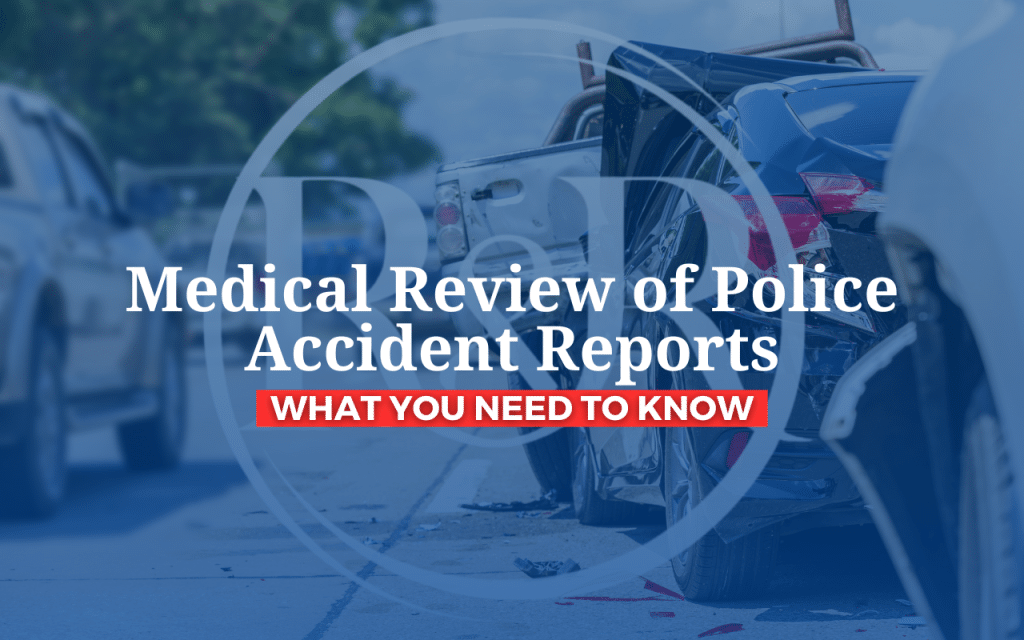How to Read Your NY Car Crash Report
Car accidents in New York City can be complex and overwhelming, especially when it comes to understanding the aftermath and the various reports involved. One of the most important documents you’ll encounter after a car crash is your New York State Department of Motor Vehicles (DMV) Police Accident Report. This report contains vital information about the accident, including details about the involved parties, the cause of the accident, and the injuries sustained.
However, reading and comprehending your car crash report can be challenging. The report is filled with codes, symbols, and abbreviations that may be unfamiliar to the average person. To add to the confusion, insurance companies and legal professionals carefully scrutinize every detail in the report to determine liability and compensation.
We will guide you through the process of reading your NY car crash report. We will explain why it is crucial to understand this document, what information is included in the report, and how to navigate its various sections. Additionally, we will decode the terminology used in the report and discuss how to make use of the information in insurance claims and legal proceedings. Whether you’re a victim of a car accident or simply want to familiarize yourself with reading car crash reports, this blog will provide you with the necessary knowledge to navigate this crucial document.
Understanding Your NY Car Crash Report
To fully understand your NY car crash report, it’s important to be aware of the specific terms associated with it. A car accident report, also known as a police accident report or a Department of Motor Vehicles (DMV) accident report, is a document generated by law enforcement officers after a car accident occurs in the state of New York. This report serves as an official record of the accident and contains critical information about the incident, the parties involved, and the injuries sustained.
Why Reading Your Car Crash Report is Crucial
Understanding the importance of reading your car crash report is crucial for several reasons. Firstly, it provides vital details about the circumstances leading to the accident, helping in understanding liability and the sequence of events. Secondly, it assists in assessing the accuracy of information documented by the investigating officer. Moreover, reviewing the report is essential for identifying any discrepancies and ensuring that it aligns with your recollection of the incident. Lastly, the car crash report forms the basis for insurance claims and legal proceedings, making it imperative to comprehend its contents thoroughly.
What Information is Included in a Car Crash Report
A car crash report typically includes vital details such as the date, time, and location of the accident, the parties involved, witnesses, and any injuries sustained. It also covers the assessment of the investigating police officer, vehicle and property damage, and potential factors contributing to the accident, such as alcohol involvement or unsafe driving. Furthermore, the report may contain information on the types and severity of injuries, providing a comprehensive account of the incident for insurance and legal purposes.
Exploring the Sections of Your NY Car Crash Report
Page 1 of your NY car crash report typically contains preliminary details such as the date, time, and location of the accident, and the involved parties’ basic information. Pages 2 and 3 list the parties and witnesses, along with their contact and license numbers. Page 4 provides a detailed description of the accident, injuries sustained, and medical assistance received. Pages 5 and 6 comprise official observations and remarks by the investigating officer, while Page 7 offers the final assessment of the incident.
Page 1: Preliminary Details
Page 1 of your New York car crash report contains vital preliminary details such as the date, time, and location of the accident. It also includes the accident case number, the names of the involved parties, and their contact information. Additionally, you’ll find the driver’s license numbers and insurance details. These initial pieces of information are crucial for any legal or insurance processes that may follow the accident. Understanding this section lays the groundwork for comprehending the entire report.
Pages 2 & 3: Involved Parties and Witnesses
When reviewing pages 2 and 3 of your NY car crash report, pay close attention to the information about involved parties and witnesses. This section typically includes details about the drivers, their licenses, and contact information. Additionally, it may list the names and statements of any witnesses to the accident. Understanding this information is crucial as it can help support your insurance claim or legal case. It’s essential to carefully review and accurately comprehend the details provided in these pages to ensure the accuracy of the report.
Page 4: Description of the Accident and Injuries
In the description of the accident and injuries section, you can find crucial details about the specific nature of the accident, the impact on the involved vehicles, and the injuries sustained by those involved. This section outlines the sequence of events leading up to the accident, the contributing factors, and a detailed account of the injuries suffered by each party. Understanding this section is essential for assessing the severity of the accident and its consequences.
Page 5 & 6: Official Observations and Remarks
Official observations and remarks in your New York car crash report are significant as they contain the investigating officer’s unbiased perspectives. These sections may include insights on the accident cause, road conditions, weather at the time of the accident, and any potential traffic violations. Furthermore, remarks regarding injuries and property damage are often noted. Understanding these observations is crucial, as they can influence insurance claims and legal proceedings. It’s essential to carefully analyze these details with the help of a legal professional.
Page 7: Final Assessment
The final assessment on page 7 of your NY car crash report is a critical summary of the entire incident. It includes the contributing factors, such as weather conditions, road layout, and lighting. The officer’s assessment of what caused the accident and any traffic law violations will also be documented. Additionally, this section may contain conclusions about contributing factors, such as alcohol involvement or aggressive driving. Understanding this assessment is vital in comprehending the official determinations of fault and liability.
Decoding the Terminology in Your NY Car Crash Report
Decoding the Terminology in Your NY Car Crash Report
Understanding the terminology used in your New York car crash report is crucial for accurately comprehending the details documented by the investigating police officer. Familiarizing yourself with commonly used terms, codes, and abbreviations will enable you to decipher the report effectively. This includes understanding specific codes for vehicle types, injury classifications, and other pertinent information. By decoding the terminology, you can gain valuable insights into the circumstances surrounding the accident, aiding in insurance claims and legal proceedings.
Commonly Used Terms
When reading your New York car accident report, you may encounter commonly used terms such as “vehicle damage codes,” “police accident report,” “traffic law,” and “accident form.” These terms are essential for understanding the details of the incident, assessing the severity of the damages, and comprehending the legal aspects. Familiarizing yourself with these terms can empower you to navigate conversations with insurance companies, legal professionals, and other relevant parties more effectively. Understanding these terms is crucial for making informed decisions regarding your accident case.
Understanding Codes and Abbreviations
Decoding the terminology used in your NY car crash report is essential for a comprehensive understanding. The report may contain various codes and abbreviations that are crucial for analyzing the details of the accident accurately. Familiarizing yourself with these terms can provide valuable insights into the circumstances and factors involved in the collision. Understanding the specific codes and abbreviations will enable you to effectively interpret the information documented in the report. This comprehension can be beneficial when communicating with insurance companies or legal representatives.
Making Use of Your NY Car Crash Report
Understanding how to leverage your NY car crash report is crucial in navigating the aftermath of an accident. The report greatly influences insurance claims and legal proceedings. Insurance companies and legal teams rely on its details to assess the extent of the damage, injuries sustained, and the sequence of events. It plays a pivotal role in determining the compensations for property damage and personal injuries. Familiarizing yourself with the content empowers you to make informed decisions and seek appropriate legal assistance.
How the Report Influences Insurance Claims
Understanding how the report influences insurance claims is crucial for ensuring fair compensation. Insurance companies heavily rely on the details in the car crash report to assess liability and the extent of damages. Information such as the officer’s assessment, vehicle damage codes, and the type of injuries documented can significantly impact the insurance settlement. It’s essential to review the report thoroughly and understand its implications to build a strong case for your insurance claim.
The Report’s Role in Legal Proceedings
Understanding the report’s role in legal proceedings is crucial for anyone involved in a car accident. The New York car accident report serves as a vital piece of evidence in legal proceedings. It provides essential details about the accident, including the parties involved, witness statements, and the investigating officer’s assessment. This information greatly influences the outcome of any legal dispute related to the accident, making it imperative to thoroughly comprehend the report’s significance in legal proceedings.
When to Consult a Professional
If you find yourself grappling with the complexities of your NY car crash report, it’s time to seek professional assistance. Consulting a seasoned accident attorney can provide invaluable guidance in understanding the report’s implications and navigating the often complicated process of insurance claims. Additionally, legal professionals can offer crucial insights into assessing the report’s influence on potential legal proceedings. For expert advice on interpreting your car crash report and taking the next steps, reaching out to a specialized legal team or your insurance provider is highly recommended.
Seeking Legal Assistance
After reviewing your New York car accident report, you may consider seeking legal assistance. An experienced attorney can help you navigate the complicated process of filing an injury claim or dealing with insurance companies. They can also provide valuable advice on how the report may influence legal proceedings or insurance claims. Legal teams familiar with New York traffic law and accident cases are well-equipped to offer guidance specific to your situation. It’s essential to seek legal advice promptly after a car accident to protect your rights and ensure fair compensation.
Contacting Your Insurance Provider
After obtaining your New York car accident report, it’s crucial to contact your insurance provider promptly. Inform them about the accident and provide the necessary details such as the date, time, and location of the incident. You should also share the accident case number and the officer’s assessment. Your insurance company will guide you on the subsequent steps for filing a claim and the supporting documents required. This initial communication is vital to initiate the claims process and ensure timely resolution.
Contact Rosenberg & Rodrigeuz Today
Understanding your NY car crash report is crucial for various reasons. It provides you with important information about the accident, involved parties, injuries, and official observations. By decoding the terminology used in the report, you can make better use of it when dealing with insurance claims or legal proceedings. If you come across any mistakes in the report, you have the right to request a revision. In case you need assistance, contact Rosenberg & Rodriguez today for a free consultation and learn more about how we can help.




